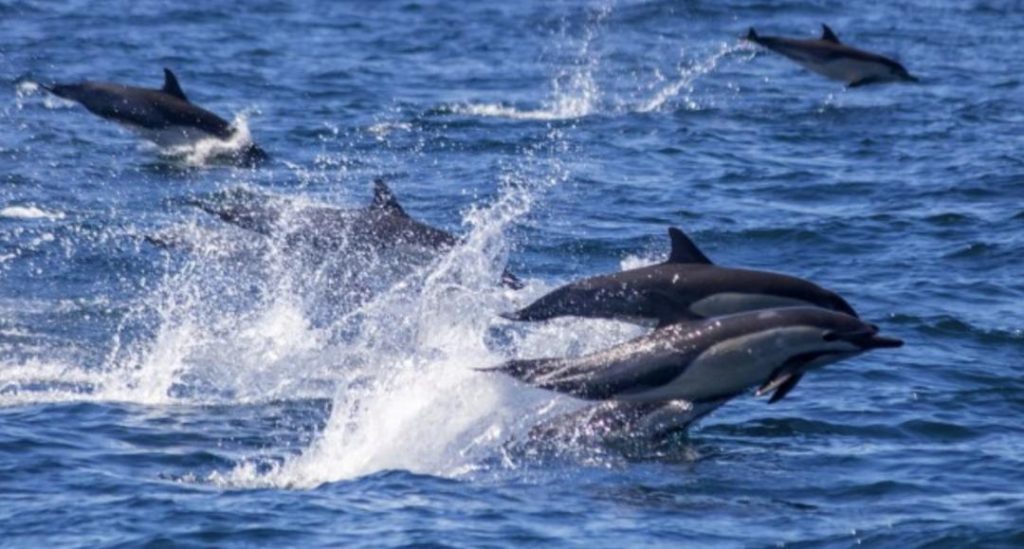
Dolphins & Whales Regularly Socialise with Each Other: Study
In a fascinating discovery, researchers from Griffith University have found that dolphins and whales regularly socialise with each other, engaging in playful interactions that are often mutual. The study, published recently, analyzed videos and photographs of interactions between baleen whales and dolphins, covering 19 species across 199 separate events.
The findings of the study have shed new light on the social behavior of these marine mammals, previously thought to be solitary creatures. The research has also provided valuable insights into the complex relationships between different species in the ocean ecosystem.
The study, conducted by a team of researchers from Griffith University’s School of Environment and Science, used a combination of video and photographic evidence to analyze the interactions between baleen whales and dolphins. The researchers observed that the most common interaction involved dolphins swimming near the whale’s head, often playing and splashing around each other.
One of the most striking findings of the study was the level of mutual engagement between the dolphins and whales. The researchers found that in many cases, the dolphins and whales were equally involved in the playful interactions, with neither species dominating the other. This level of mutual engagement is a rare phenomenon in the animal kingdom, where dominant species often tend to assert their dominance over subordinate species.
The study also found that bottlenose dolphins were the most involved dolphin species in these interactions, with 45% of all interactions involving this species. The researchers suggested that this may be due to the fact that bottlenose dolphins are highly social creatures that are known to form close bonds with each other, and their social nature may extend to their interactions with other marine mammals.
The findings of the study have significant implications for our understanding of the social behavior of marine mammals. Until now, researchers have tended to view dolphins and whales as solitary creatures that only interact with each other in the context of mating or hunting. However, this study suggests that these species may be more social than previously thought, and that their interactions may be driven by a desire for social connection and play rather than just survival.
The study’s lead author, Dr. Simon Childerhouse, said that the findings were “a game-changer” for our understanding of marine mammal social behavior. “We’ve always thought of dolphins and whales as being solitary creatures, but this study shows that they’re actually quite social and playful,” he said. “This has significant implications for our understanding of their behavior and their interactions with each other.”
The study’s findings also have implications for conservation efforts. If dolphins and whales are capable of forming complex social bonds with each other, then it may be necessary to consider their social relationships when developing conservation strategies. For example, conservation efforts may need to take into account the impact of noise pollution on dolphin and whale communication, or the impact of habitat destruction on their social behavior.
In conclusion, the study’s findings provide a fascinating glimpse into the social behavior of dolphins and whales. The discovery that these species regularly socialise with each other and engage in playful interactions has significant implications for our understanding of their behavior and their interactions with each other. As we continue to learn more about these amazing creatures, we may uncover even more surprising insights into their social nature.
Source:






